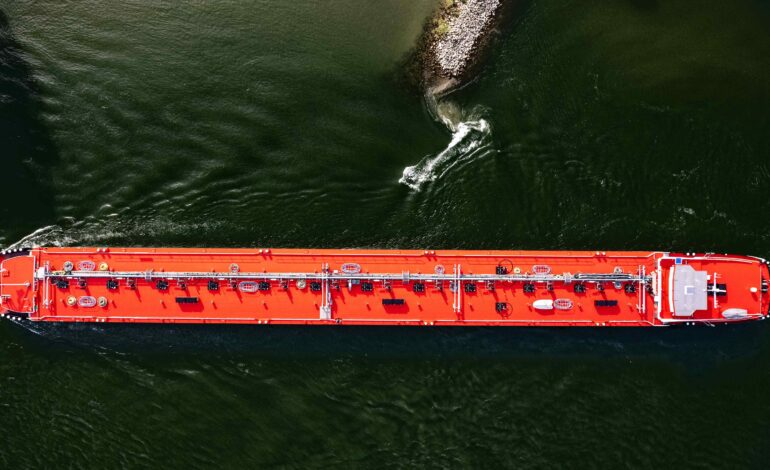
The Impact of Bunker Fuel Taxation Policies
Bunker fuel taxation policies are gaining traction as governments and international bodies seek to curb greenhouse gas emissions and generate revenue from the maritime industry. These policies have far-reaching implications for the shipping sector, influencing fuel costs, operational strategies, and environmental outcomes. This article delves into the impact of bunker fuel taxation policies, examining the economic effects, environmental benefits, and strategic responses from industry stakeholders.
Understanding Bunker Fuel Taxation Policies
Bunker fuel taxation involves levies imposed on the fuel used by ships, with the dual objectives of reducing emissions and raising government revenue. These taxes can take various forms, including:
- Carbon Taxes:
- Imposed based on the carbon content of the fuel, carbon taxes directly target the reduction of CO2 emissions by making high-carbon fuels more expensive.
- Fuel Excise Taxes:
- These are specific taxes per unit of fuel volume or weight, irrespective of the fuel’s carbon content.
- Emission Trading Systems (ETS):
- An alternative to direct taxation, ETS requires shipping companies to buy emission allowances, effectively capping the total emissions and creating a market for emission permits.
Economic Impacts
- Increased Operational Costs:
- Fuel Prices: Bunker fuel taxes raise the cost of fuel, leading to higher operational expenses for shipping companies. This increase can significantly impact profit margins, especially for companies operating on thin margins.
- Freight Rates: Higher fuel costs are often passed on to customers through increased freight rates, affecting global trade dynamics and consumer prices.
- Competitiveness:
- Global Trade: Companies in regions with stringent bunker fuel taxes may face competitive disadvantages compared to those in regions with lower or no taxes, potentially leading to shifts in trade routes and practices.
- Fleet Modernization: To mitigate tax impacts, companies might invest in newer, more fuel-efficient vessels or alternative propulsion technologies, driving innovation but also requiring significant capital expenditure.
- Revenue Generation:
- Government Revenue: Bunker fuel taxes provide a significant revenue stream for governments, which can be reinvested in green initiatives, port infrastructure, and maritime research and development.
Environmental Benefits
- Emission Reductions:
- Lower Carbon Footprint: By making carbon-intensive fuels more expensive, bunker fuel taxes incentivize the use of cleaner alternatives, such as low-sulfur fuel oil (LSFO), liquefied natural gas (LNG), and biofuels, thereby reducing overall emissions.
- Efficiency Improvements: Higher fuel costs encourage shipping companies to adopt fuel-saving measures, such as slow steaming, optimized routing, and advanced hull designs.
- Promotion of Alternative Fuels:
- Innovation: The financial pressure from taxes spurs innovation in alternative fuels and propulsion technologies, accelerating the transition to a low-carbon maritime industry.
- Infrastructure Development: Increased demand for alternative fuels drives investment in supporting infrastructure, such as LNG bunkering facilities and hydrogen production plants.
Strategic Responses from the Industry
- Operational Adjustments:
- Speed Reductions: Known as slow steaming, reducing vessel speeds can significantly cut fuel consumption and emissions, making it a common response to higher fuel costs.
- Optimized Routing: Advanced navigation and routing technologies can minimize fuel use by optimizing voyage plans based on weather and sea conditions.
- Technological Investments:
- Energy Efficiency Technologies: Investments in energy-efficient technologies, such as air lubrication systems, hull modifications, and energy-saving devices, can offset higher fuel costs.
- Alternative Propulsion: Transitioning to alternative propulsion methods, such as LNG engines, hybrid systems, or wind-assisted propulsion, can reduce reliance on taxed fuels.
- Supply Chain Strategies:
- Fuel Procurement: Diversifying fuel procurement strategies to include a mix of traditional and alternative fuels can help manage costs and ensure compliance with varying tax regimes.
- Fleet Renewal: Phasing out older, less efficient vessels in favor of modern, fuel-efficient ships can enhance long-term sustainability and cost-effectiveness.
Challenges and Considerations
- Regulatory Complexity:
- Global Disparities: Inconsistent implementation of bunker fuel taxes across different jurisdictions creates a complex regulatory landscape for shipping companies operating globally.
- Compliance Costs: Navigating varying tax regimes and ensuring compliance can increase administrative and operational burdens.
- Economic Impact on Trade:
- Cost Pass-Through: Higher shipping costs can be passed through to consumers, affecting the prices of imported goods and potentially leading to inflationary pressures.
- Trade Competitiveness: Differential impacts on trade competitiveness could alter global supply chains, influencing where goods are produced and shipped.
- Technological and Infrastructure Readiness:
- Availability of Alternatives: The readiness and availability of alternative fuels and supporting infrastructure vary globally, impacting the feasibility of transitioning away from taxed fuels.
- Investment Requirements: Significant capital investments are required to develop and deploy new technologies and infrastructure, posing financial challenges for shipping companies.
Conclusion
Bunker fuel taxation policies play a critical role in steering the maritime industry towards a more sustainable future. While these taxes present economic challenges, they also drive significant environmental benefits and technological innovations. The industry’s strategic responses, including operational adjustments, technological investments, and supply chain strategies, will determine the effectiveness and impact of these policies. As the regulatory landscape continues to evolve, collaboration between governments, industry stakeholders, and technological innovators will be essential to achieving a balanced and sustainable maritime sector.





